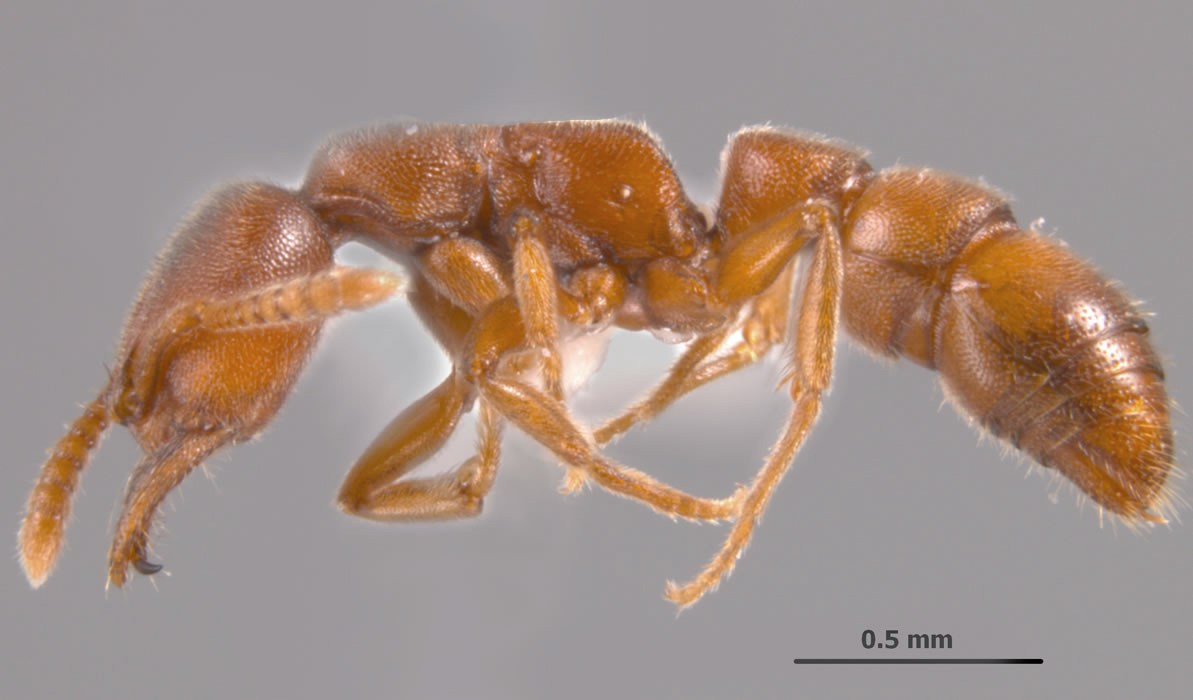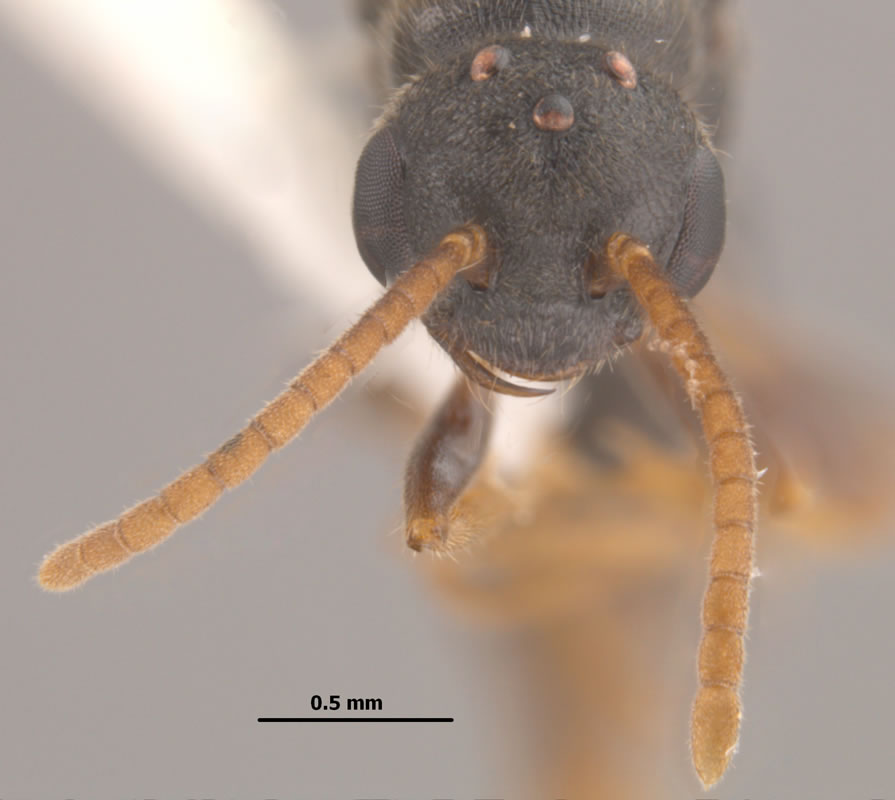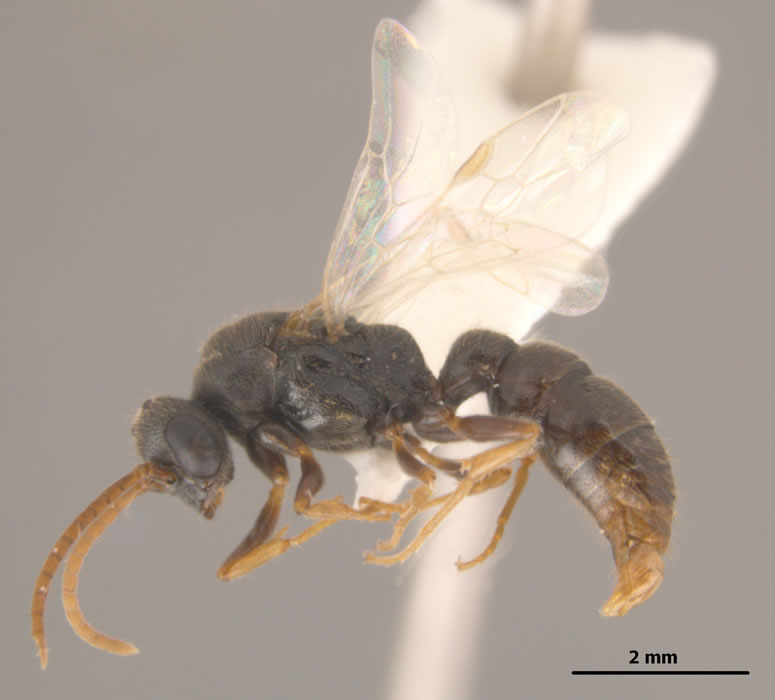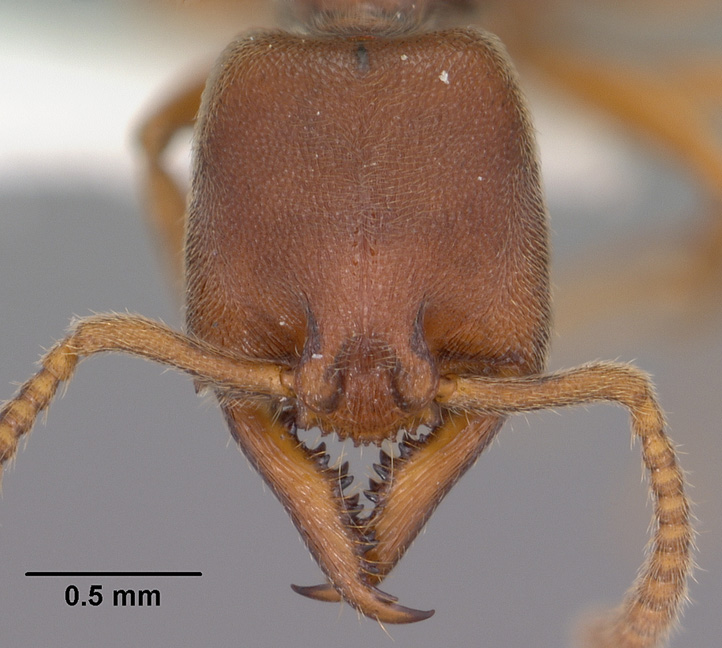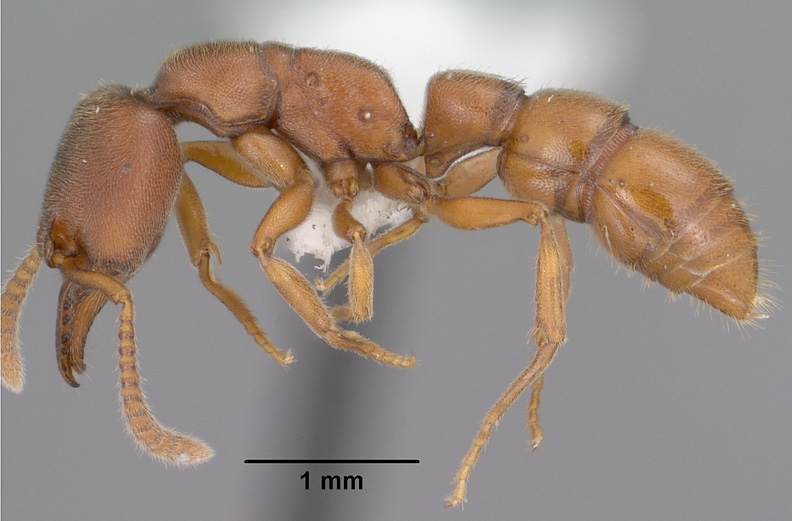Subfamily AMBLYOPONINAE Tribe AMBLYOPONINI Stigmatomma pallipes (Haldeman 1844) [formerly Amblyopone] "Dracula Ants" |
|
Stigmatomma pallipes, full face view of a worker (click image to enlarge). |
Stigmatomma pallipes, side view of a worker (click image to enlarge). |
Stigmatomma pallipes, full face view of a male (click image to enlarge). |
Stigmatomma pallipes, side view of a male (click image to enlarge). |
Stigmatomma pallipes, full face view of a worker (click image to enlarge). Photo courtesy of http://www.antweb.org/ |
Stigmatomma pallipes, side view of a worker (click image to enlarge). Photo courtesy of http://www.antweb.org/ |
Introduction Identification Biology and Economic Importance Natural History: The main source of food of this species is reported to be chilopods (Smith, D. R., 1979). Foragers hunt singly for geophilomorph centipedes, which they grasp with long, bidenticulate-toothed mandibles and paralyze with a long and powerful sting. Prey may be dragged into a nearby nest or larvae may be brought to the paralyzed prey to feed (Trager pers. comm). Members of this genus are sometimes referred to as Dracula ants because queens of some species obtain much of their nutrients from hemolymph of their larvae. The queen, and sometimes workers, puncture the integument of the larvae, which results in a small drop of hemolymph, which is then lapped up. For more about this bizarre behavior, see Alex Wild's online article about the related species Stigmatomma oregonensis (link). Although I rarely encounter more than a few workers at a time, I have seen numerous alates, both male and female, in malaise and Lindgren funnel traps, which gives me the impression that this species is quite common. We routinely collect this ant in wooded areas, and in a current study of Mississippi ants, have already collected it in over one-fourth of the counties in the state. Alates have been collected in mid July. This species would not typically be considered a pest species and generally would have little or no obvious impact on mankind. However, this species does have the capabililty of stinging, and it is concievable that alate females could get caught in someones clothing and sting them. This sort of thing is know to happen with various ponerine ants, although I do not know of any instances of this species stinging anybody. Distribution Literature Cited Links |
|



